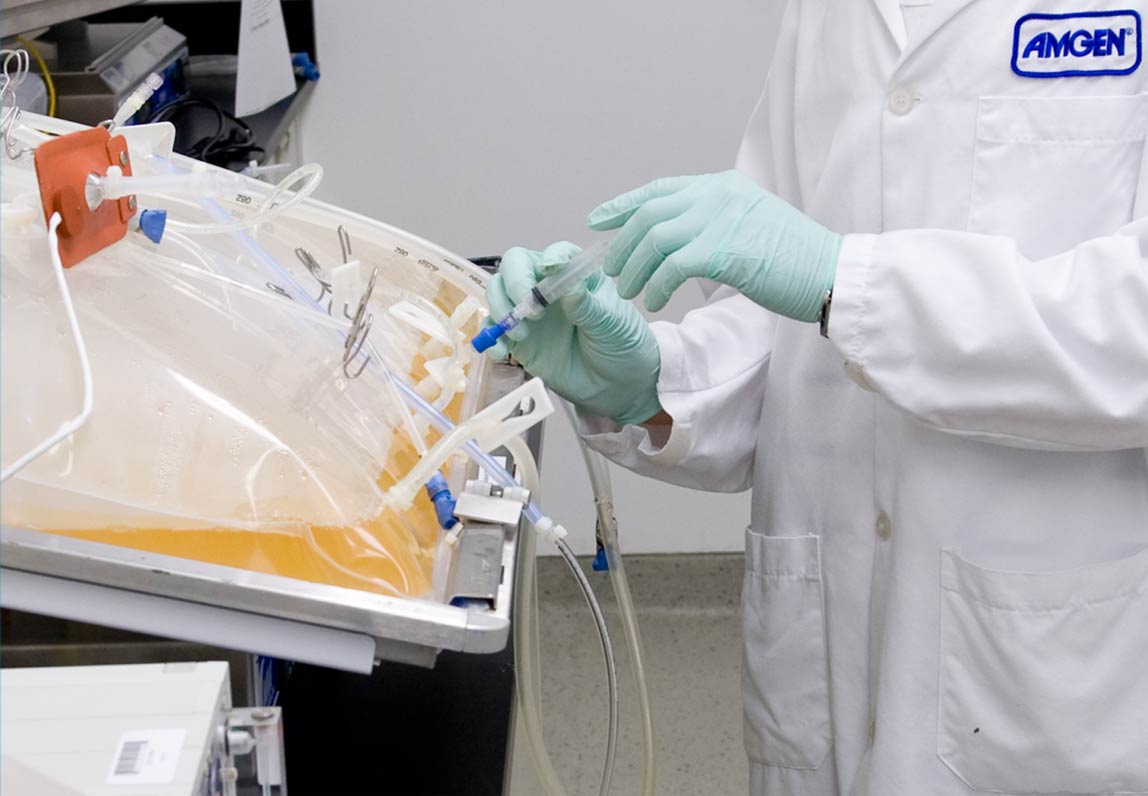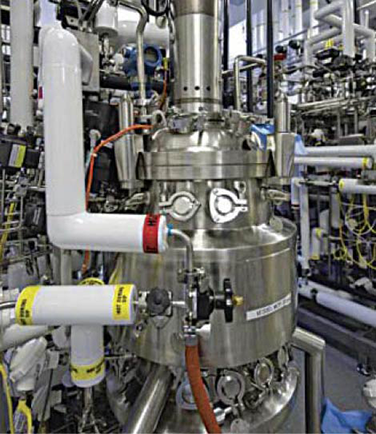Since 1980, Amgen has been at the forefront of modern biotechnology, inventing industry-leading technologies to develop and manufacture biologic medications for humans.1 In keeping with its history of manufacturing innovation and excellence, Amgen is now leading the way in the development and use of manufacturing technologies that will help set the standard for the future.
Globalization of the biopharmaceutical industry has enabled us to provide breakthrough, life-changing medicines to millions of patients around the world. However, delivering high-quality medicines to more and more patients globally has put increased pressure on the industry’s manufacturing capabilities.
At Amgen, we are focused on advancing biomanufacturing to address the current market challenges and help ensure that doctors and patients can continue to rely on the quality and availability of our treatments. This includes employing more efficient, faster processes for producing human proteins, antibodies and other medications while maintaining high quality. By sharing our methods and data with others in the scientific community, Amgen aims to help set new standards for biotechnology manufacturing.2,3
References
- Data on file, Amgen; 2013.
- Swift R. Case study—glass vial delamination in a biopharmaceutical product. Paper presented at: Rx-360 Glass Delamination Scientific Symposium; May 25, 2011; Arlington, VA.
- Data on file, Amgen; 2013.
Innovation in Action
Amgen is a global leader in biologics manufacturing — including pioneering processes such as an innovative single-use technology that reduces the need to clean and sterilize equipment thereby reducing the high-energy and water-consumptions costs of traditional manufacturing.

Amgen’s Innovation: Efficiency Through Continuous Improvement

Manufacturing biologics, medicines produced by living cells,1 is complicated, intricate and resource-intense.2 Biologics have changed the face of medicine1 and will continue to do so;3 however, it is clear that manufacturers need to ensure their processes are as flexible and efficient as possible to deliver a cost-effective and reliably available product.4
As a global leader in biologics manufacturing, Amgen evaluates all options to make its medicines with the highest quality manufacturing processes and continually evaluates those processes to find efficiencies in obvious and not so obvious ways. For example, Amgen has pioneered the combined use of new, single-use technologies with traditional stainless equipment to reduce the sole reliance on expensive and inefficient apparatus. By using disposable equipment such as filters, tank liners and even bioreactors themselves, processes are more efficient and less prone to contamination.4
Single-use technology reduces the need to clean and sterilize equipment after use, thereby minimizing water consumption and consequent impact on the environment.5 Importantly, these processes reduce the high energy required to sterilize large manufacturing equipment.4
Change-over times are shorter and this reduces production timelines with a resulting boost to productivity and ability to respond to demand. Single-use equipment is also designed to be more simple to operate and install, thereby reducing the potential risk of human error.4 This results in a more efficient, streamlined manufacturing process.4,6
Amgen scientists are transforming the biopharmaceutical landscape through combining innovative, single-use technologies, thereby improving productivity and efficiency in manufacturing biologics. This is achieved through stream-lining processes, reducing chances of contamination, and saving energy as repeated sterilization of older and more complicated equipment is no longer required. The combined use of disposable technologies will continue to shape the future of biopharmaceutical manufacturing.
References
- Sekhon BS, Saluja V, Biosimilars 2011.
- Kuhlmann M, Covic A, Nephrol Dial Transplant (2006) 21 [Suppl 5]: v4–v8
- Bren L, FDA Consumer Magazine 2006. http://www.fda.gov/AboutFDA/What WeDo/History/CentennialofFDA/CentennialEditionofFDAConsumer/ucm096141.htm. Accessed 4/11/13.
- Zheng R, BioProcess International, Supplement April 2010.
- Rawlings B, Pora H, BioProcess International February 2009.
- Whitford W, BioProcess International, 10(5)s Supplement May 2012.
